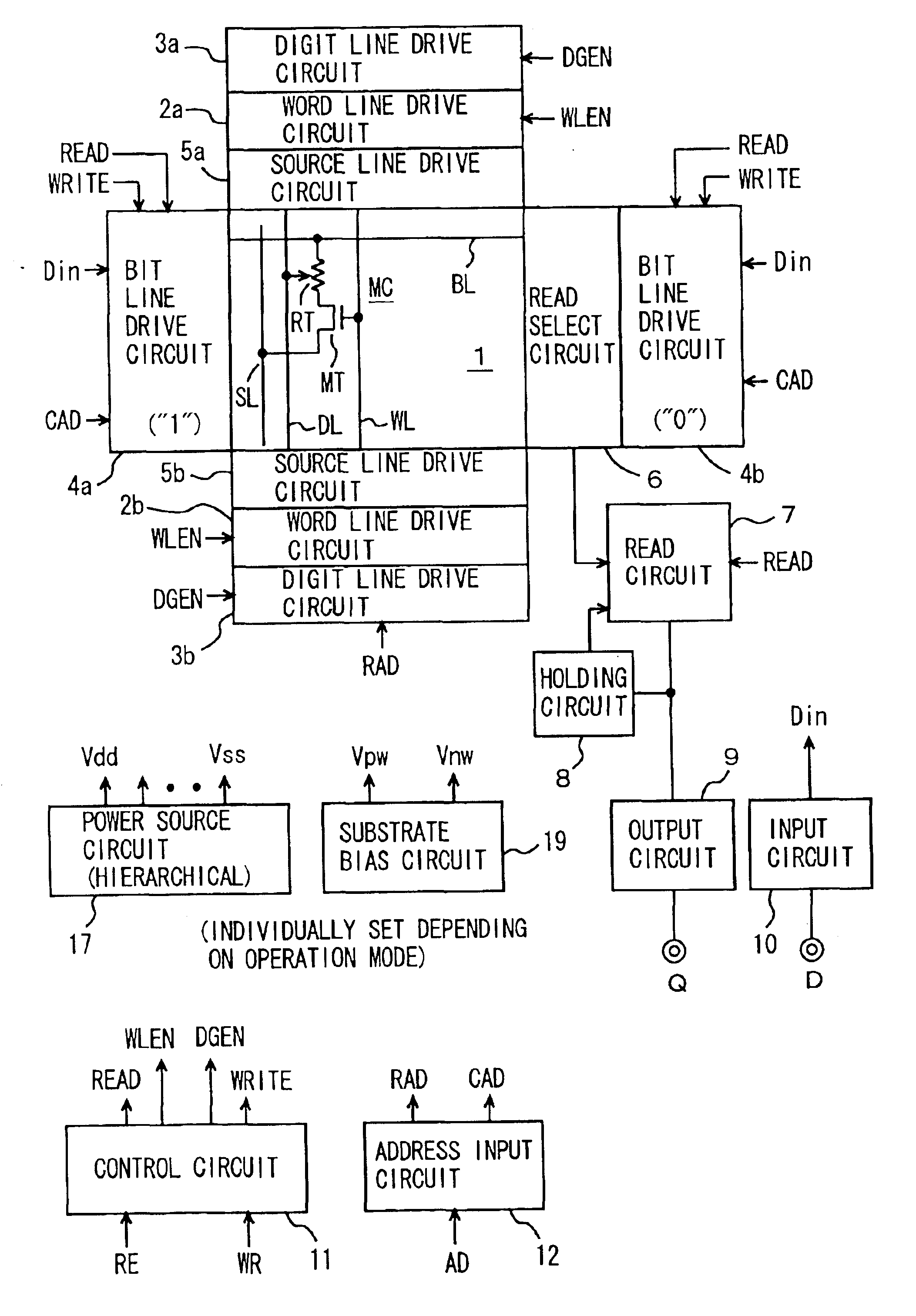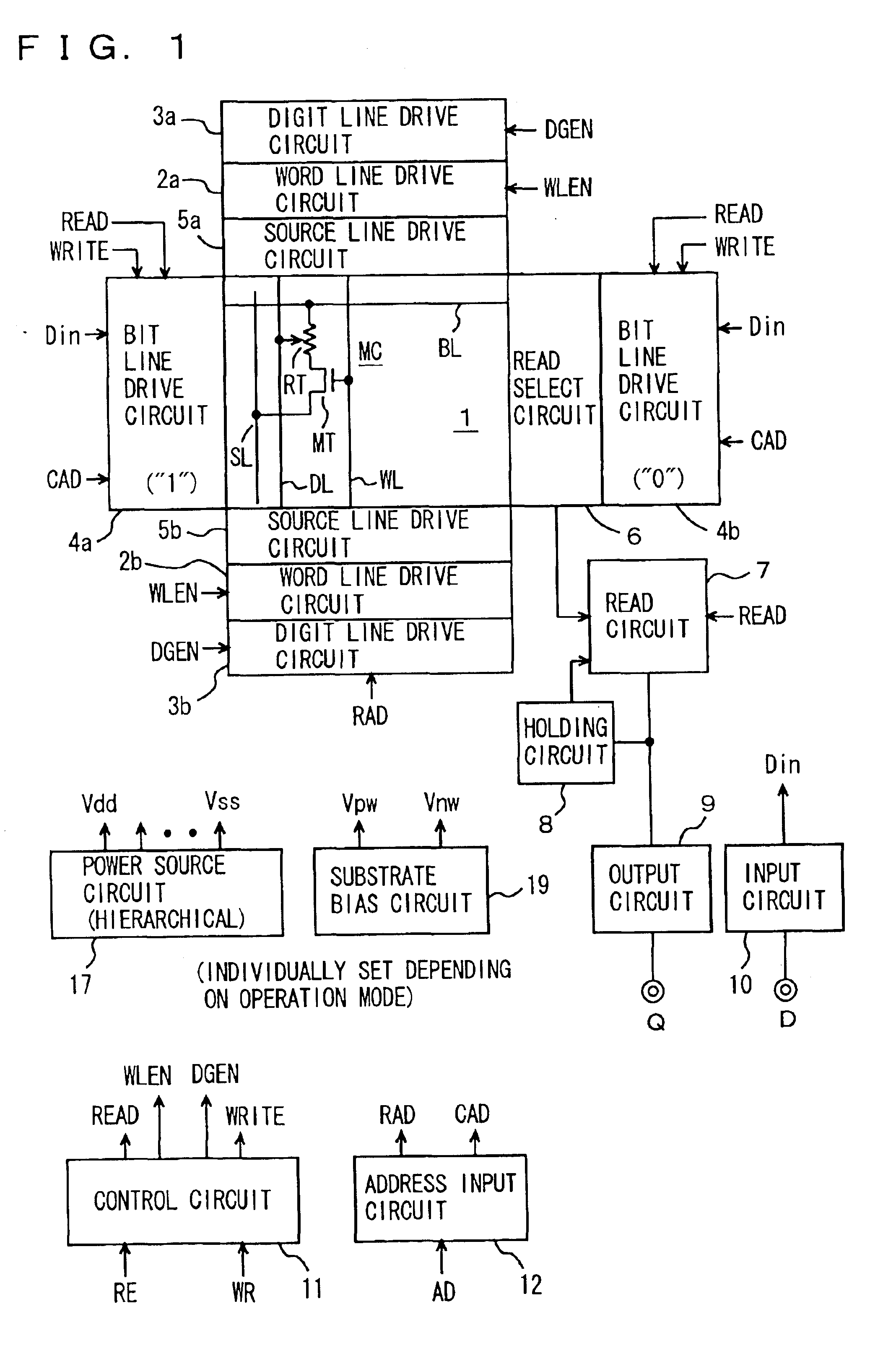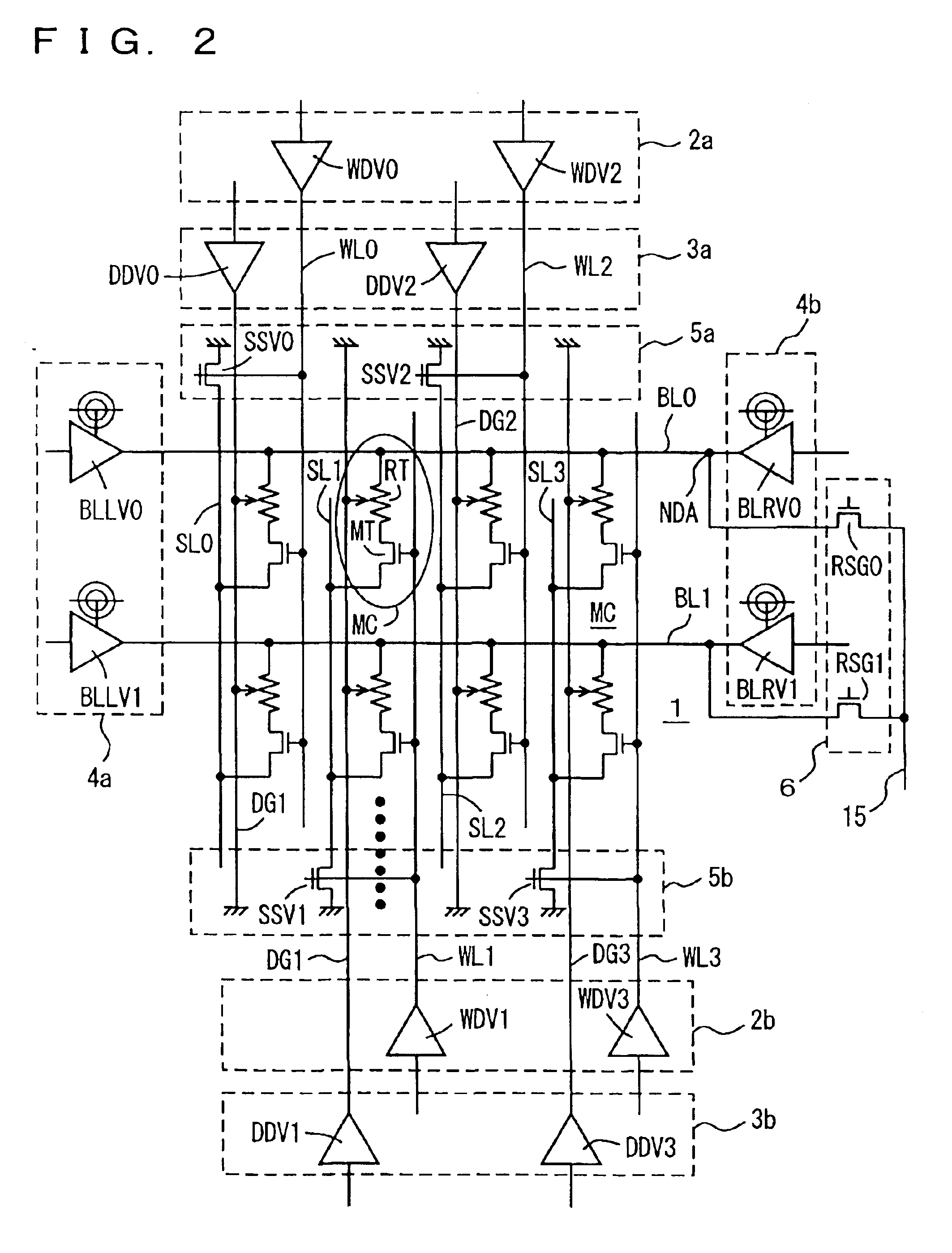Semiconductor memory device operating with low current consumption
a memory device and semiconductor technology, applied in the direction of information storage, static storage, digital storage, etc., can solve the problems of noise, inability to be neglected, and required data read operation sense current of the order of 10 ma, and achieve accurate reading and low current consumption
- Summary
- Abstract
- Description
- Claims
- Application Information
AI Technical Summary
Benefits of technology
Problems solved by technology
Method used
Image
Examples
first embodiment
FIG. 1 schematically shows a whole structure of a nonvolatile semiconductor memory device according to a first embodiment of the invention. In FIG. 1, the nonvolatile semiconductor memory device includes a memory cell array 1 having memory cells MC arranged in rows and columns. Memory cell MC includes a variable resistance element (TMR element) RT having a resistance value variable in accordance with storage data, and an access transistor MT for selecting resistance element RT for connection to a source line SL in accordance with a signal on a word line WL. Access transistor MT is formed of an N-channel MOS transistor.
A write word line, a read word line, a write bit line and a read bit line are arranged corresponding to memory cell MC. For the sake of simplicity, the write bit line will be merely referred to as “bit line BL”, and the write word line will be referred to as “digit line DL”, the read word line referred to as “word line WL”, and the read bit line as “source line SL” in ...
PUM
 Login to View More
Login to View More Abstract
Description
Claims
Application Information
 Login to View More
Login to View More - R&D
- Intellectual Property
- Life Sciences
- Materials
- Tech Scout
- Unparalleled Data Quality
- Higher Quality Content
- 60% Fewer Hallucinations
Browse by: Latest US Patents, China's latest patents, Technical Efficacy Thesaurus, Application Domain, Technology Topic, Popular Technical Reports.
© 2025 PatSnap. All rights reserved.Legal|Privacy policy|Modern Slavery Act Transparency Statement|Sitemap|About US| Contact US: help@patsnap.com



